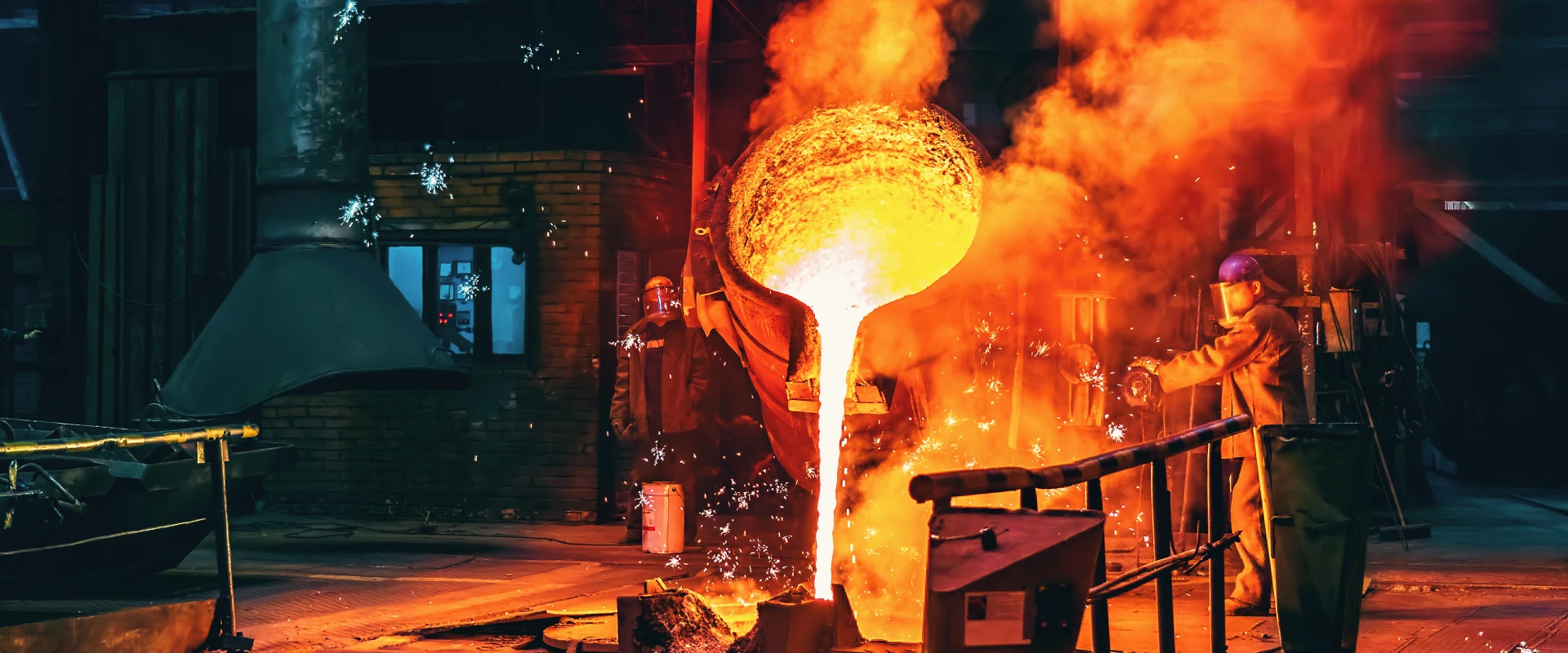Ultra-Low-Carbon Stainless Steel in Medical Devices: Properties & Processing
Application of Ultra-Low-Carbon Stainless Steel in Medical Devices: Properties and Processing Requirements
In operating rooms and clinics, the tools and devices used daily—scalpels, forceps, and even implantable parts like bone plates—need to meet impossible standards. They must be strong enough to withstand rigorous use, corrosion-resistant to survive repeated sterilization, and safe enough to touch human tissue without causing harm. Ultra-low-carbon stainless steel has emerged as a top choice for these critical applications. With carbon content below 0.03%, this material avoids the pitfalls of traditional stainless steel, offering unique properties that make it indispensable in modern medicine. Let’s dive into why it works so well and what it takes to shape it into life-saving tools.
Why Carbon Content Matters in Medical Stainless Steel
Carbon is what gives stainless steel strength, but in medical settings, too much can be a problem. Traditional stainless steel (with 0.08–0.15% carbon) forms tiny carbides—hard particles that form when carbon bonds with chromium—during high-heat processes like welding or annealing. These carbides reduce the amount of chromium available to form a protective oxide layer, making the steel more prone to rust. In a hospital, where tools are sterilized with high-temperature steam or harsh chemicals like hydrogen peroxide, rust isn’t just unsightly—it can harbor bacteria or weaken the tool over time.
Ultra-low-carbon stainless steel (like 316L, the most common grade in medical use) solves this. With less than 0.03% carbon, it forms far fewer carbides, even after repeated heating. This keeps the chromium oxide layer intact, ensuring the steel resists corrosion through hundreds of sterilization cycles. A study by a medical device manufacturer found that 316L scalpels showed no rust after 500 autoclave cycles, while traditional 316 (with 0.08% carbon) started rusting after 300 cycles.
Key Properties That Make It Ideal for Medical Use
Ultra-low-carbon stainless steel brings three critical properties to the table for medical devices:
Corrosion Resistance: As mentioned, the thin chromium oxide layer acts like a shield. This is vital for tools that contact bodily fluids (which are slightly acidic) and for implants that stay inside the body for years. A 316L bone screw, for example, won’t corrode in the presence of blood or tissue fluids, preventing harmful metal ions from leaching into the body.
Biocompatibility: The steel is non-reactive with human tissue. Unlike some metals that trigger allergic reactions or inflammation, ultra-low-carbon stainless steel is tolerated by even sensitive patients. This makes it safe for everything from surgical scissors that touch skin to pacemaker cases that sit against the heart.
Strength with Ductility: It’s tough enough to handle the pressure of clamping tissues (like forceps) but flexible enough to be bent into precise shapes (like the tiny hooks on laparoscopic tools). This balance is hard to find—metals that are too hard can snap, while too soft ones bend under use.
A surgeon specializing in minimally invasive procedures put it simply: “These tools feel reliable. They don’t rust, they hold their edge, and I never worry about them failing mid-operation. That peace of mind matters when you’re working on a patient.”
Processing Challenges: Shaping Ultra-Low-Carbon Steel for Medical Tools
Working with ultra-low-carbon stainless steel isn’t the same as standard steel. Its low carbon content makes it slightly softer, which affects how it’s cut, bent, and welded. Manufacturers have to adjust their processes to get the precision medical devices demand.
Cutting and Grinding
Surgical tools need razor-sharp edges—scalpels that slice cleanly, forceps with precise tips. Cutting ultra-low-carbon stainless steel requires sharper, slower-moving blades than standard steel. If the blade moves too fast, it can generate heat that softens the metal, blunting the edge. For example, grinding a 316L scalpel blade at 1.500 RPM instead of 3.000 RPM results in a sharper edge that stays keen longer.
Water cooling during grinding is another must. It keeps the metal from overheating, which could otherwise warp the tool or reduce its corrosion resistance. A medical toolmaker in Germany found that using chilled water (10°C) during grinding reduced edge defects by 40% compared to room-temperature water.
Welding for Implants
Many medical devices—like surgical trays or implantable cages for spinal surgeries—are made by welding pieces of ultra-low-carbon stainless steel together. Welding this material requires low heat to avoid forming carbides. TIG (Tungsten Inert Gas) welding is the go-to method here: it uses a non-consumable tungsten electrode and inert gas (argon) to shield the weld, producing clean, precise joints with minimal heat input.
Even with TIG welding, parameters matter. A current of 50–80 amps (lower than the 100+ amps used for standard steel) and a travel speed of 10–15 cm per minute prevent overheating. After welding, parts are often “solution annealed”—heated to 1.050°C and quickly cooled—to dissolve any carbides that might have formed, restoring full corrosion resistance.
Bending and Forming
Tools like hemostats (clamps used to stop bleeding) need to be bent into specific shapes that spring back when released. Ultra-low-carbon stainless steel’s ductility makes bending easier, but it can “spring back” more than standard steel. Manufacturers compensate by over-bending slightly—for example, bending a hemostat jaw to 95° if the final shape needs to be 90°—to account for the metal’s tendency to relax.
For complex shapes, like the curved arms of a dental brace, manufacturers use “warm forming”—heating the steel to 200–300°C (not hot enough to form carbides) to make it more malleable. This reduces the force needed to bend it and results in more consistent shapes. A dental supply company switched to warm forming for their 316L braces and saw a 25% reduction in defects from cracked or misshapen parts.
Real-World Applications in Medical Devices
Ultra-low-carbon stainless steel’s unique mix of properties makes it suitable for a wide range of medical tools and implants:
Surgical Instruments: Scalpels, forceps, and retractors made from 316L resist corrosion from blood and cleaning chemicals. Their smooth surfaces are easy to sterilize, preventing cross-contamination between patients.
Implantable Devices: Bone plates, screws, and even some pacemaker cases use ultra-low-carbon stainless steel. Its biocompatibility means it won’t trigger immune responses, and its corrosion resistance ensures it lasts for decades inside the body.
Medical Trays and Carts: These need to withstand daily scrubbing and autoclaving. 316L trays stay rust-free and maintain their strength, even after years of heavy use in busy hospitals.
A children’s hospital in Canada switched all their surgical tools to 316L stainless steel and reported a 60% drop in tool replacements over five years. “We used to throw out forceps that rusted after a few months,” said the hospital’s sterile processing manager. “Now they look new after years of use.”
How It Compares to Other Medical Materials
Ultra-low-carbon stainless steel isn’t the only option for medical devices, but it often outperforms alternatives:
Titanium Alloys: More corrosion-resistant but much more expensive. They’re used for long-term implants like hip stems, but 316L is cheaper and easier to process for tools.
Plastics: Lightweight and cheap but can’t withstand high-temperature sterilization. They’re used for disposable tools, while 316L handles reusable ones.
Standard Stainless Steel (304 or 316): Less expensive upfront but costs more in the long run due to rust and frequent replacements. In busy hospitals, 316L’s longer lifespan makes it the better value.
Meeting Strict Regulatory Standards
Medical devices made from ultra-low-carbon stainless steel must meet rigorous standards, like ISO 13485 (for quality management) and ASTM F138 (specifically for surgical stainless steel). These standards set limits on impurities (like lead or nickel, which can cause allergies) and require testing for corrosion resistance and biocompatibility.
For example, to pass ASTM F138. 316L steel must undergo a “salt spray test” where it’s exposed to saltwater mist for 100 hours without rusting. It also needs to pass a “cytotoxicity test” to ensure it doesn’t harm living cells—a critical check for implantable devices.
Manufacturers often go above and beyond these standards. Some use “electropolishing” on finished tools, a process that dissolves the outer layer of metal to create a super-smooth surface. This not only makes cleaning easier but also removes any tiny metal particles that could flake off into the body.
Future Trends in Medical Ultra-Low-Carbon Steel
Researchers are finding new ways to enhance ultra-low-carbon stainless steel for medical use. One trend is adding small amounts of molybdenum (up to 3%) to 316L, making it even more resistant to pitting corrosion from saline solutions (like those used in IV fluids). Another is “antimicrobial” coatings, where the steel is treated with silver ions to kill bacteria on contact—useful for tools that can’t be sterilized immediately after use.
There’s also work on making the steel more “osseointegrative”—able to bond with bone—for implantable parts. By adding a thin layer of hydroxyapatite (the mineral in bone) to ultra-low-carbon stainless steel screws, researchers hope to help them fuse with bone faster, reducing healing time for patients.
Why It Matters for Patient Safety
At the end of the day, ultra-low-carbon stainless steel’s role in medical devices comes down to one thing: patient safety. A rust-free scalpel is less likely to carry bacteria. A corrosion-resistant implant won’t fail prematurely. A precisely bent forceps works reliably when a surgeon’s focus is on saving a life.
For medical professionals, this material reduces stress. They can trust that their tools will perform as needed, every time. For patients, it means fewer complications, shorter recovery times, and the peace of mind that comes with knowing the devices touching their bodies are built to the highest standards.
Ultra-low-carbon stainless steel may not be the most glamorous material, but in operating rooms and clinics worldwide, it’s a quiet hero—proof that sometimes, the smallest details (like 0.03% carbon or less) make the biggest difference in healthcare.

